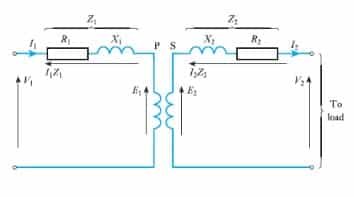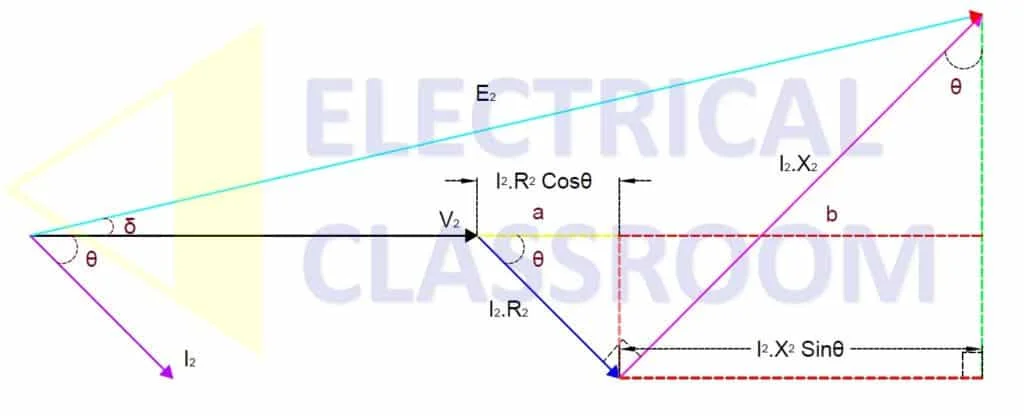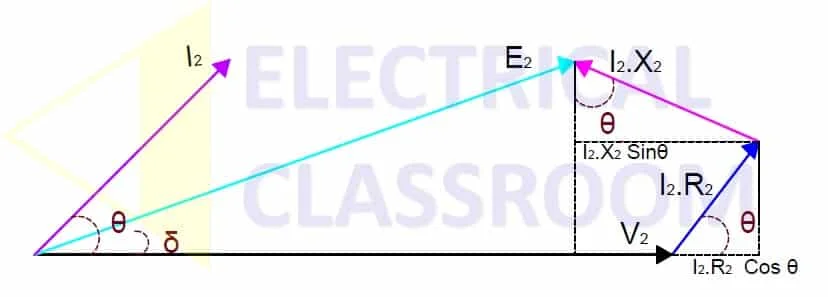Voltage regulation of transformers can be a little tricky to understand. Every piece of equipment is designed to operate at a particular voltage or voltage range. Therefore, it is a basic requirement of the power system to maintain the system at a certain level.
What is voltage regulation in transformer?
Any transformer must be capable of maintaining the secondary voltage within a limit even though the magnitude and power factor of the load at the secondary changes. The voltage regulation of a transformer tells us how well the transformer can maintain the output voltage as the magnitude and power factor of the load varies from no load to full load.
Definition of voltage regulation
Voltage regulation of transformers can be defined as the change in the magnitude of the secondary voltage of a transformer when the load changes from full load to no-load, assuming a constant primary voltage.

Where,
- Vno-load is the no-load voltage measured across the secondary terminals
- Vfull-load is the voltage measured across the secondary terminal at full load.
Per cent voltage regulation of transformers
Normally, voltage regulation of transformers are expressed as either per – unit or percentage of the load voltage

Calculate online: Per cent voltage regulation calculator
Voltage regulation of an Ideal transformer
As you know, an ideal transformer is a theoretical representation of a transformer which has zero losses. In an ideal transformer, there shall be no voltage drop in the secondary winding. Hence the voltage variation at the secondary when the load varies from full loaf to no load is zero. Therefore, for an ideal transformer, the voltage regulation is zero.
But practically it is not the case. The transformer winding has a certain amount of impedance. Some amount of voltage is dropped due to this impedance. Since current flow at no load is zero, there shall be no voltage loss at the secondary.
But when the load on the transformer gradually rises to full load, the full load current flows through the winding and a certain amount of voltage is dropped at the primary winding and the secondary winding. This voltage drop depends on the load current. Therefore, the voltage at the input terminals of a transformer is always higher than the primary winding voltage, due to losses at the primary winding. Similarly, the load voltage is always lower than the induced secondary voltage due to losses in the secondary winding.
Voltage regulation with respect to power factor

The voltage regulation of transformers depends on the power factor of the load. If the load is inductive, the power factor will be lagging and if the load is capacitive, the power factor will be leading. From the equivalent circuit
V1 = E1 + I1.Z1
V2 = E2 – I2.Z2
For lagging power factor

Where,
δ = Phase shift between induced secondary voltage and voltage at secondary terminals
E2 =Induced secondary voltage
V2 = Secondary terminal voltage
I2 = Secondary current
R2 = Winding resistance
X2 = Winding Inductance
θ = Phase angle
Cos δ = E2 / (V2 + I2.R2 Cos θ + I2.X2 Sin θ )
Practically δ is very small, close to zero.
Hence,
Cos 0 = E2 / (V2 + I2.R2 Cos θ + I2.X2 Sin θ )
E2 = V2 + I2.R2 Cos θ + I2.X2 Sin θ
Substituting the above equation in the equation of voltage regulation of transformers,
E2 = I2.R2 Cos θ + I2.X2 Sin θ
Hence percentage voltage regulation of a transformer at lagging power factor at no-load can be expressed as

For leading power factor

Cos δ = E2 / (V2 – (I2.X2 Sin θ – I2.R2 Cos θ) )
Since δ is very small,
E2 = V2 – (I2.X2 Sin θ – I2.R2 Cos θ) = V2 + I2.R2 Cos θ – I2.X2 Sin θ
Substituting the above equation in equation – 1,
E2 = I2.R2 Cos θ – I2.X2 Sin θ
Hence percentage voltage regulation of a transformer at leading power factor at no-load can be expressed as

Significance of Voltage regulation
The load connected to the power system or a transformer will not be steady all the time. Change in load causes changes in current and hence the voltage drop in the transformer winding as well. It is necessary to maintain the supply voltage of the equipment supplied by the transformer. Because the supply voltage directly affects the performance of the equipment. Hence, the voltage regulation of the transformer is significant.